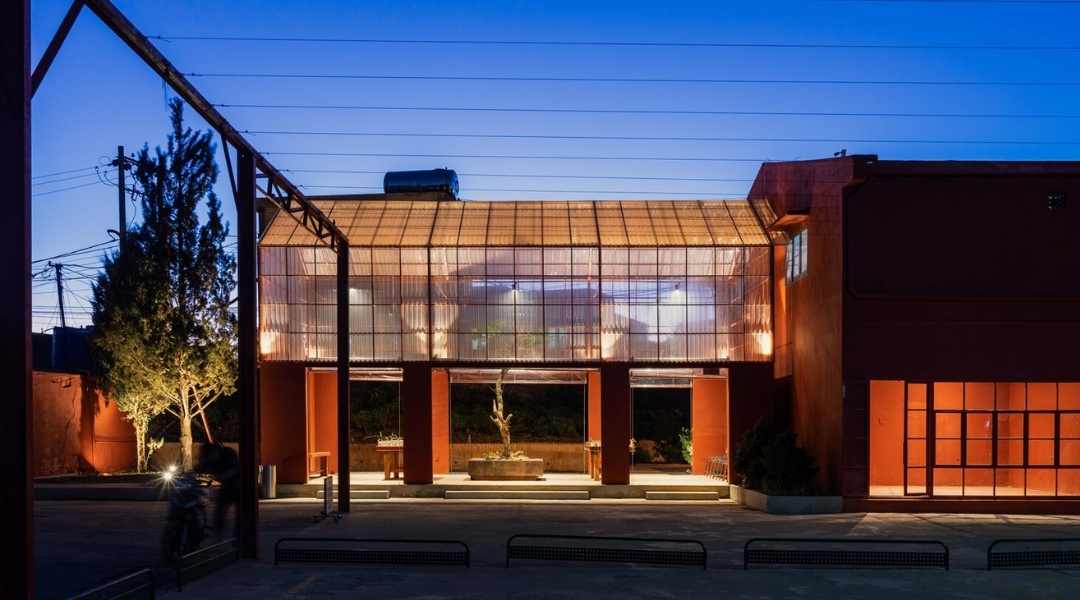The realm of architecture is experiencing a remarkable evolution through adaptive reuse, where aging steel industrial buildings are being reimagined into dynamic, functional spaces. This article explores the intricacies of this transformative process, highlighting the ingenious ways in which these structures are given new life while preserving their historical significance. Amidst this architectural revolution, the concept of adaptive reuse breathes vitality into the steel frame building, seamlessly transitioning it from a symbol of the past into a modern marvel of form and utility. This journey delves into the art of repurposing, illustrating how the convergence of history and innovation can yield striking results that enrich our urban landscapes and redefine the possibilities of architectural adaptation.
Repurposing Prefab Steel Buildings for a Sustainable Future:
The core principle of adaptive reuse finds a new expression when applied to prefab steel buildings. Once serving as efficient shelters for various purposes, these structures are ready to transform into centers of modern functionality and environmental responsibility. This process infuses fresh purpose into buildings that might have faded into obsolescence. The outcome is a seamless coalescence of legacy and innovation—a fusion that enriches the architectural landscape of our urban and rural areas.
Honoring Heritage and Embracing Progress:
Central to repurposing prefab steel buildings is the intent to honor their history while embracing their future potential. These structures often retain signs of their initial use—traces of their original purpose etched into their steel bones. Adaptive reuse initiatives celebrate these remnants, crafting spaces where bygone eras harmonize with contemporary needs. As one steps into these revitalized buildings, they journey through time, connecting with the narratives of those who once engaged with these spaces.
Challenges as Catalysts for Creativity:
Every endeavor in adaptive reuse comes with its own set of challenges. Ensuring the structural integrity of aging prefab steel buildings demands careful assessment and reinforcement. Adhering to modern building codes while preserving historical aesthetics requires a delicate equilibrium. Architects and engineers with technical prowess and imaginative thinking devise inventive solutions. These challenges are not hindrances but stepping stones toward a fluid transition from prefab relic to functional haven.
Foundations of Sustainability:
In an era of environmental consciousness, repurposing prefab steel buildings emerges as an inherently sustainable choice. This approach curtails the need for fresh construction materials and curbs the ecological toll of demolition. The inherent robustness of prefab steel structures lends to adaptability, rendering them robust contenders for transformation. Sustainability emerges as a cornerstone, weaving together the past, the present, and the future.
Economic Wisdom in Transformation:
Economics significantly influences the surge in interest in repurposing prefab steel buildings. The conversion of a prefab steel building can prove financially prudent when contrasted with new construction. The existing structure provides a foundation that, although requiring rejuvenation, often proves more cost-effective than starting from scratch. The allure of historical charm coupled with the potential for favorable returns beckons investors, tenants, and enterprises, fostering a mutually beneficial relationship between heritage and prosperity.
Versatile Metamorphosis:
The evolution of prefab steel buildings attests to their remarkable versatility. Once dedicated to specific functions, these structures offer various possibilities. Factories become contemporary residences adorned with remnants of their industrial past—visible steel beams, expansive windows, and open layouts. The juxtaposition of history and modern design cultivates an atmosphere where innovation thrives, and daily life resonates with echoes of yesteryears.
Harmony in the Urban Landscape:
Adaptive reuse extends beyond individual buildings to shape entire urban landscapes. Repurposing prefab steel buildings in densely populated areas helps counter urban sprawl by revitalizing existing spaces. The revival of these structures infuses neighborhoods with vitality, fostering community bonds and cultural enrichment. Neglected corners of cities transform into vibrant hubs, each telling a unique tale—a narrative of transformation, preservation, and the intricate interplay between past and present, all within the framework of prefab steel.
Conclusion
The trajectory of adaptive reuse paints a compelling picture of architectural evolution, where the metamorphosis of aging steel industrial buildings signifies the triumph of creativity, sustainability, and historical homage. As we witness the resurrection of the steel frame building, we glimpse a future where the echoes of the past resonate harmoniously with the demands of the present. This journey of repurposing showcases the potential of human ingenuity to navigate challenges, honor heritage, and embrace transformation. As these structures are revitalized to cater to contemporary needs, they embody resilience, resourcefulness, and a deep respect for the architectural legacies that have shaped our world. The art of adaptive reuse invites us to envision a world where the structures of yesterday forge a path toward the urban landscapes of tomorrow. This journey thrives on the duality of adaptation and timelessness, echoing the enduring spirit of architectural innovation.
